The best Unreal Engine 5 plugins
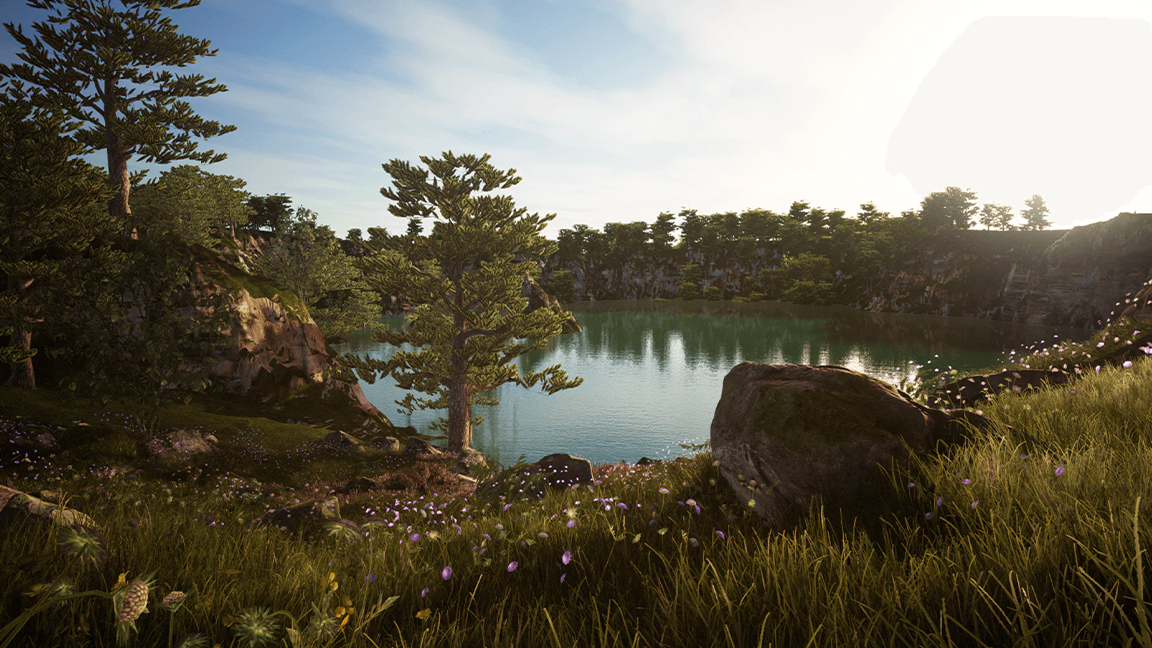
The best Unreal Engine 5 plugins have become go-to tools for all sorts of 3D work, allowing artists to do more with what is one of the leading graphics platforms for everything from video games to archviz. Epic Games' UE5 is an incredibly powerful application on its own, but all software has its limitations, and plugins help to overcome these.
UE5 plugins can improve the functionality of the engine by modifying or adding features, as well as making more things possible at runtime, enhancing your work and making your life easier too.
There are free and paid add-ons covering a huge range of areas. In this series of short reviews, I've picked the best UE5 plugins for materials, terrains, oceans and crowds. These cover some of major areas of game development, but there are numerous viable options in each.
Read our Unreal Engine 5 review for more on the game engine; and see my feature on how game engines are the future of 3D art. We also have a guide to the best game development software for more options. Remember that you might need one of the best laptops for game development to run the software.
The best Unreal Engine 5 plugins
Why you can trust Creative Bloq
The best Unreal Engine 5 plugin for oceans and rivers
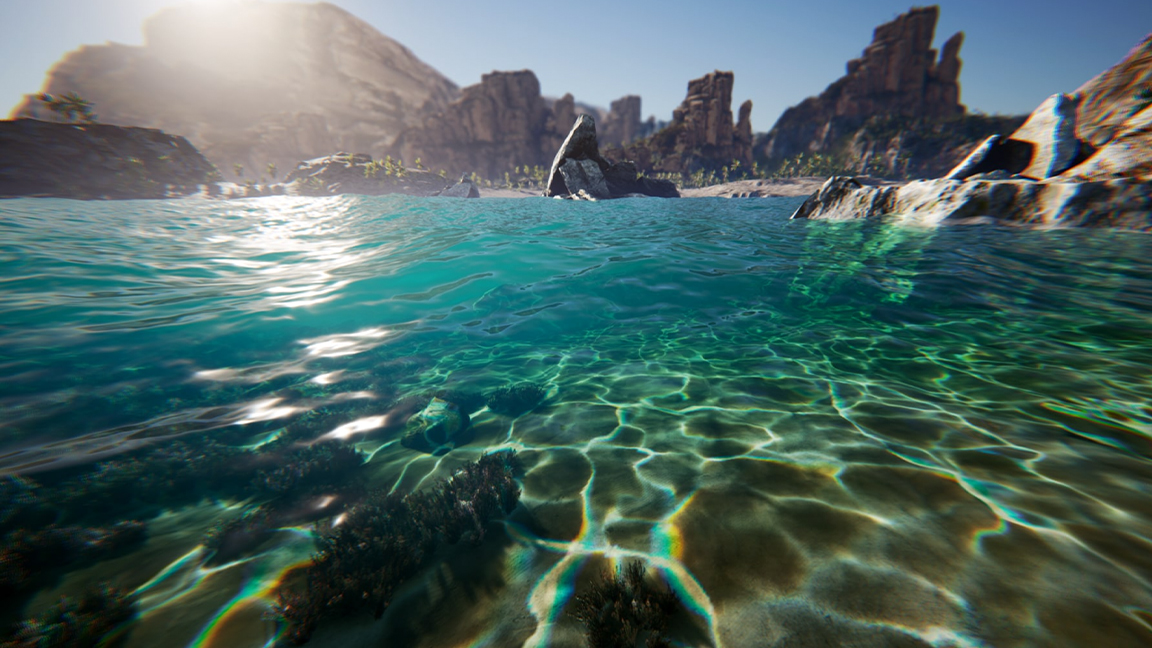

01. Oceanology
Our expert review:
Specifications
Reasons to buy
If you want an Unreal Engine 5 plugin to create stunning oceans then look no further than Oceanology, and there is also a Riverology plugin by the same developer.
There really is little to be negative about with this plugin. The results that can be achieved are stunning and to think that it’s all in real-time makes it even more impressive. One of Oceanography’s biggest strengths for me is that it isn’t just limited to the ocean surface, but users can actually go underwater. This is perfect for video games that make use of scenes both above and below water. While underwater you’ll find both god rays and caustics that are easy to set up and beautifully realistic.
These features really add depth to a scene and make the experience much more immersive and believable. The ocean surface itself is also incredibly realistic and straightforward to set up. On top of this, the plugin gives you parameters to drive both waves and foam. By being able to adjust the parameters for these effects, artists can really fine-tune their ocean’s appearance, making it choppy for a dramatic and stormy scene or perfectly calm for that serene setting. The Local option is particularly helpful for setting up a lake or pool, whereas the Infinite option will get you that endless sea.
The plugin also comes with other assets such as trees and rocks. These are scanned assets so they are highly realistic and, as you’d expect, are at a good enough detail to be realistic but not so much as to drag performance back.
By purchasing the plugin, you’ll be given all the demo scenes that are displayed in the promo video, which means new users can get off to a really good start. I find it incredibly helpful to have access to real-world scenes when trying to understand how a piece of software works. It makes it so much easier to interrogate the scene, pick it apart and adjust parameters to see how it affects the overall result. I’m sure these demo files will come in extremely useful for many new users.
There aren't many UE5 plugins for creating oceans and rivers. A common workflow is to utilise a material. There's the Ocean Material Pack created by Peter Severud, which includes foam for waves and water at the shore. It's also dynamic, interacting with other objects such as boats.
However, one of the benefits of using Oceanology over many material options is that you get the benefits of being able to go underwater with effects such as god rays and caustics.
The best Unreal Engine 5 plugin for materials
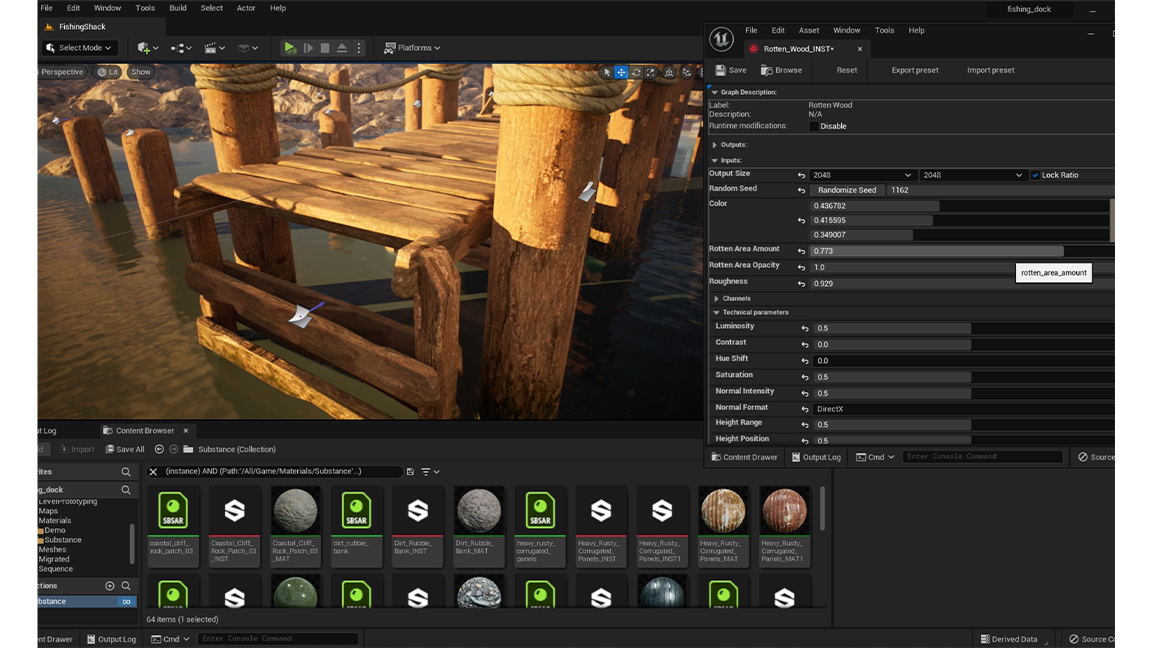

02. Substance 3D
Our expert review:
Specifications
Reasons to buy
For creating materials, you can’t really get better than the Substance plugin. This amazing plugin from Adobe is available for various programs. It lets you make use of Substance materials directly inside Unreal Engine; this enables artists to create materials directly inside the engine, as you’d expect, but if you want to take your materials to a whole new level while utilising Adobe technology, then this Substance plugin will be perfect for you.
One of the biggest benefits of using this plugin is the unbelievably huge amount of ready-to-go materials; over 10,000 to be specific. Most major digital content creation apps are devoting a lot of attention to providing tools that enable artists to create scenes with off-the-shelf models and materials.
Substance for Unreal Engine puts this type of functionality into the hands of artists. This enables artists to focus more on the process of creating the types of scenes they want and less on the technical process involved in making materials. If you’re concerned about your materials not looking right or the time it takes to do it with Unreal Engine’s tools, then worry no further. All Substance materials are physically based and respond as you’d expect them to in the real-world.
This enables artists to focus more on the process of creating the types of scenes they want and less on the technical process involved in making materials
These drag-and-drop materials, termed assets by Adobe, are not limited just to what Adobe provides. You can also access a huge amount of community assets. I was able to find most of the assets I needed within the default library, but when I came up short I knew I’d find it in the community assets section.
For various software, community-created assets fall a long way short of production quality, but I can assure you that, on the whole, this is not the case with this plugin. All of these materials are easily searchable in Substance’s repositories and can be downloaded in SBSAR format.
Further to these off-the-shelf materials, artists also have the ability to edit them inside Unreal Engine. This means they have no reason to exit the engine when developing materials for their scenes. This will save a lot of time and hassle.
Substance works seamlessly inside Unreal Engine, providing a natively behaving texturing experience. All the changes made with this plugin are reflected in the scene in real-time, making the whole process quick and easy for artists who don’t want to be held up by clunky workflows.
An alternative workflow is to download packs with pre-made materials. There is a pack called Procedural Materials made by Pixel Processor that contains 23 materials you can use straight out of the gate, but they also include parameters such as Color, Roughness and a Random Seed to mix things up.
This option doesn’t give you the control that Substance does, although it does give you a great starting point for creating realistic materials. In the marketplace you’ll find other material packs, some of which are procedural and others that aren’t.
The best Unreal Engine plugin for terrain
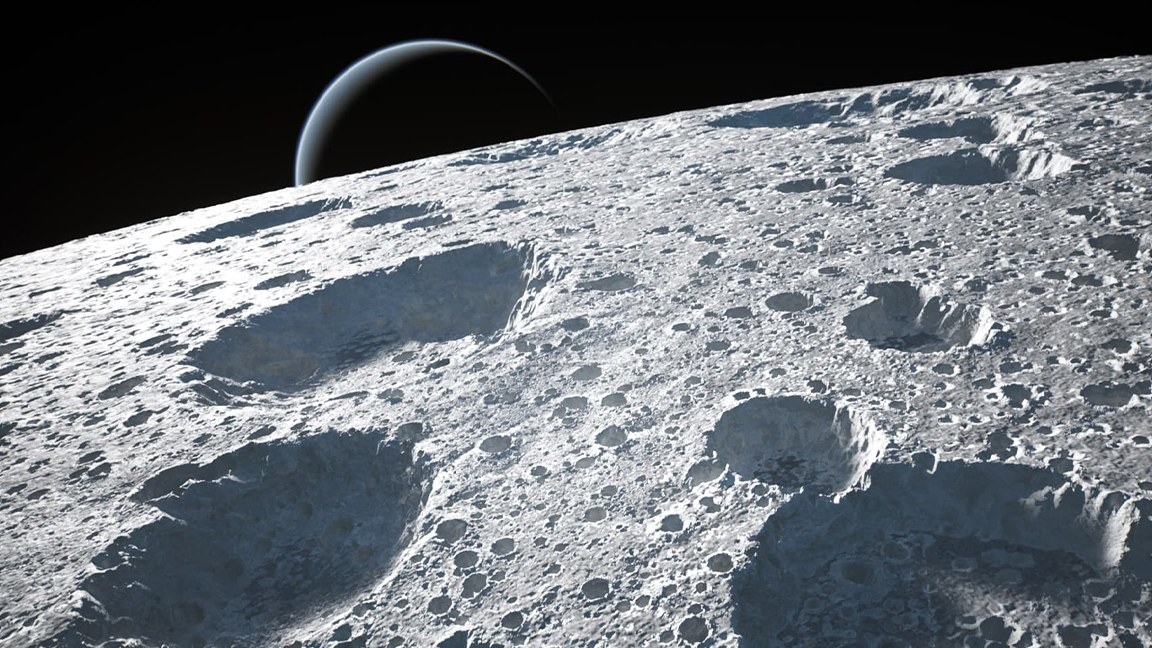
03. WorldScape
Our expert review:
Specifications
Reasons to buy
You can create whole planets and vast landscapes with WorldScape. It’s responsive and amazingly powerful with noise being driven by height maps as decals. At run-time the plugin makes use of 64-bits for amazing precision.
My favourite thing about this plugin, which may come as a surprise, is less about the terrains that can be created and more about the lighting. I love how the whole atmosphere of the world changes based on the position of the sun. It updates in realtime as you rotate or transform the sun; moving it lower for a setting sun and higher for midday. Because the lighting is easily driven by the sun’s position, artists can change the feel of their worlds with incredible ease.
The main point of note is that the whole system is procedural; pretty essential when you’re wanting to create endless and seamless terrains. There is a wide range of parameters, but they are all laid out in easy-to-locate sections, perfect for new users. Everything is updated in real time, another big plus, and with relatively decent hardware you can expect the display to update straight after making a parameter change.
Everything is contained right inside Unreal Engine as well, so you’re not having to rely on external tools to create your terrains
As you zoom in towards the surface of your world you’ll find detail popping right in front of you. This level of detail (LOD) workflow helps ensure the plugin is only calculating what it needs to at any given point and stops the hardware working harder than necessary.
Everything is contained right inside Unreal Engine as well, so you’re not having to rely on external tools to create your terrains and then import them in. By having everything in one place, you can create worlds quickly and without the importing and tweaking hassles often required with other workflows.
One feature I would love to see in WorldScape would be the ability to sculpt surfaces. I think this would enable artists to further fine-tune results for those parts of the terrain that really demand it. The plugin is also not the cheapest around, but if you’re going to make use of it on multiple projects then it quickly becomes affordable.
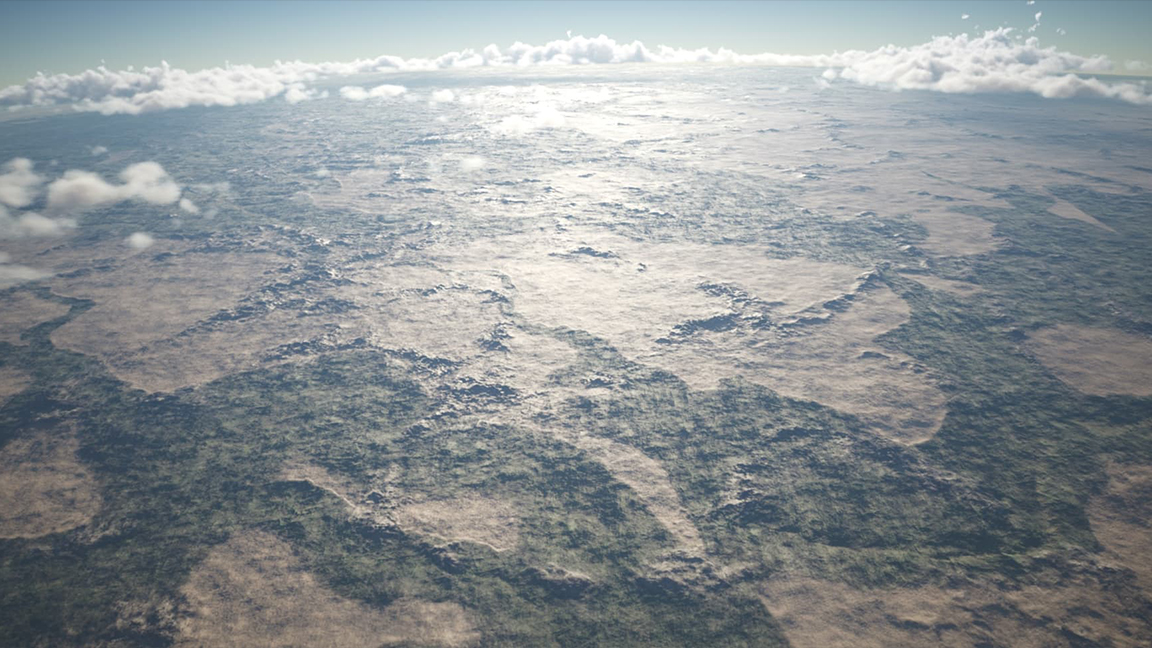
If you’re looking for an alternative to WorldScape, then you could try out Instant Terra. This plugin can be launched directly from Unreal Engine 5 and creates a live link between the Instant Terra application and UE5. It’s worth noting that this plugin is not therefore natively embedded into UE5.
That said, any changes you make in Instant Terra will be immediately updated in UE5. Utilising Instant Terra as a separate application does have the benefit that your terrains can be used in other compatible applications too.
The best Unreal Engine plugin for crowds
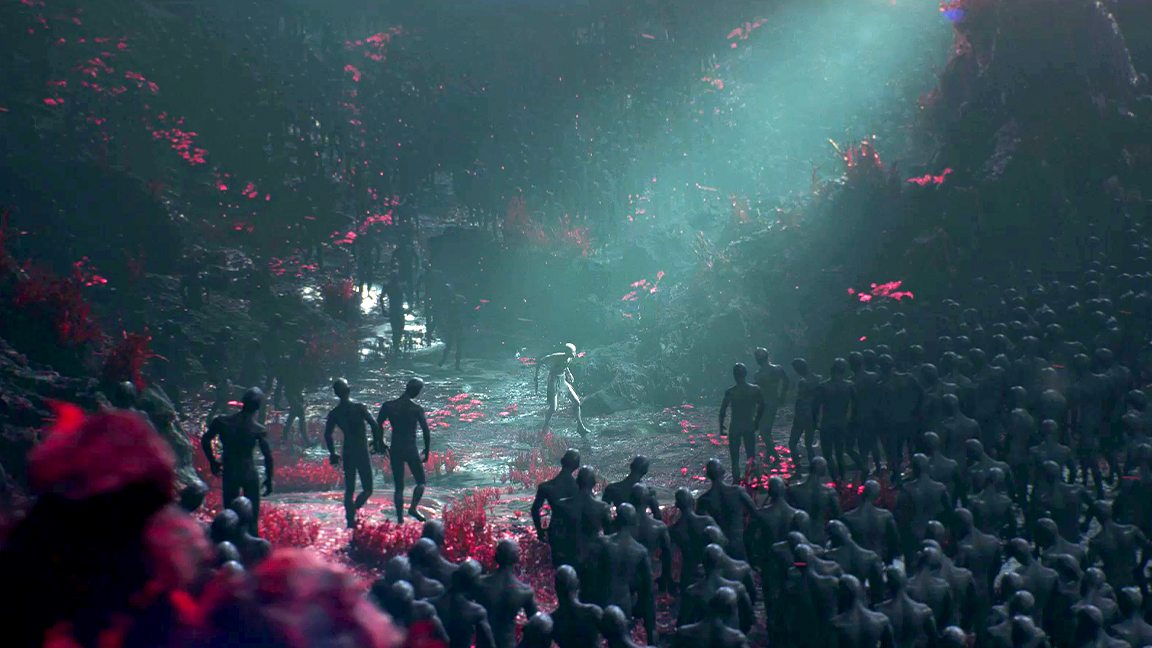
04. Atoms Crowd
Our expert review:
Specifications
Reasons to buy
Atoms Crowd is a framework that provides the foundation for a series of different applications, including a plugin for Unreal Engine (UE). With the rise of crowd scenes in films over the past decade or two, it’s no surprise there has been an increase in crowd simulation software. Atoms Unreal is built into UE and provides a great real-time option for creating both simple and complex crowds.
One of the most defining characteristics of this plugin is that it’s skeleton based. This enables highly customisable character animation and ensures you get a high level of quality. Skeletons can also be instanced, which is perfect for making the best use of your system’s resources.
I’ve been impressed with the continual improvement the Tool Chefs developers have made to this plugin. Considering it has only been in existence for a few years, they have managed to create a crowd solution that is not only usable, but one that creates impressive simulations.
Atoms Unreal performs well, even with thousands of agents and complex sequences, though you’ll appreciate that this is dependent on hardware
One of the advantages of a skeleton-based system is that it gives a quick and easy way to improve performance by simply reducing the number of joints in agent skeletons. Considerations around performance are always vital when dealing with crowd simulation software. Atoms Unreal performs well, even with thousands of agents and complex sequences, though you’ll appreciate that this is dependent on hardware.
Users who have devices that are tailored for developing or playing games are unlikely to encounter any problems with most setups. However, if you are hitting limitations then you do have other options, including reducing the quality of meshes and simplifying the agents’ behaviours.
Version 3 of Atoms Unreal made a huge leap forward in terms of performance when it introduced a feature that is now becoming increasingly common within the 3D world; bringing in an XPU processing system, where both CPUs and GPUs are utilised.
This change has resulted in artists reporting an almost doubling of their frames per second, a game-changing improvement; by only calculating agent poses in the viewport and integrating level of detail capabilities, Atoms Unreal improves its performance further. To help get you started, the Atoms team has made a number of ready-to-go agents available. With over 400 variations on hand for both stadium and city scenes, you’ll find it quick and easy to set up your own crowds.

There are a few other options for creating crowds in UE5 and one of those is Golaem. It’s a big hitter and has been involved in the likes of Game of Thrones and The Walking Dead. Like Atoms, it provides a real-time solution for crowd creation and includes a set of characters that can be used directly off the shelf.
One of the main differences between these two options is that Atoms Unreal is skeleton based, whereas Golaem is particle based. The Niagara plugin is also well worth a look. Having a variety of options in this sector keeps the market fresh and competition high. Each developer pushes the others forward as they vie to become the leading option.
The best of the rest
SpeedTree has become an industry-standard tool for procedural tree and foliage generation for everything from archviz to video games. It's powerful, flexible and accessible, allowing us to quickly generate complex and diverse tree structures based on parameters that can be tweaked to achieve the desired look, whether you want a single, detailed tree or a dense forest.
<p>Head to our step-by-step tutorial, '<a href="https://www.creativebloq.com/3d/how-to-make-lifelike-trees-and-vegetation-with-speedtree">How to make trees and vegetation with SpeedTree' to see how. There's a free learning edition, while an indie subscription starts at $19 a month. Visit the <a href="https://store.speedtree.com/?v=5b61a1b298a0" target="_blank">Speed Tree store to download.Ultra Dynamic Sky (UDS) is a popular Unreal Engine plugin for creating realistic sky and weather systems. It can generate dynamic clouds, a complete day/night cycle and weather effects like aurora and fog. It's quick to set up and highly customisable and the quality and performance make it suitable for both cinematics and gameplay. A licence costs from $49.99 at the Fab Store.
Kawaii Physics is a free, open-source plugin for Unreal Engine 5 that can add exaggerated intentional, movement like bounce and sway to hair, clothing and body parts. It's not for all games, but it can do a great job at simulating physics to fit anime games or other more stylised art styles, where realistic movements might not work. It's available on GitHub.
Where can I find Unreal Engine 5 plugins?
To see the full set of plugins for UE5, you can browse on Epic's Fab Store. Use the filters to narrow down the search results. You’ll find plugins that cover a range of price points, making them accessible for small indie creators and larger studios alike.
We also look at plugins in our guide to 3ds Max resources. I'm a longstanding 3ds Max user, I’ve downloaded many plugins over the years through places like ScriptSpot and they have enabled me to create things that would otherwise be impossible.
We also have a piece on the best places to get free game assets.
This article was originally published in issue 295 of 3D World Magazine. You can subscribe to 3D World at the Magazines Direct website and get 3 issues for £3. The magazine ships internationally.
Daily design news, reviews, how-tos and more, as picked by the editors.

Paul is a digital expert. In the 20 years since he graduated with a first-class honours degree in Computer Science, Paul has been actively involved in a variety of different tech and creative industries that make him the go-to guy for reviews, opinion pieces, and featured articles. With a particular love of all things visual, including photography, videography, and 3D visualisation Paul is never far from a camera or other piece of tech that gets his creative juices going. You'll also find his writing in other places, including Creative Bloq, Digital Camera World, and 3D World Magazine.
- Ian DeanEditor, Digital Arts & 3D



